- Targeted Treatments: Learn about specific remedies for seborrheic dermatitis on the nose, not just general facial treatments.
- Natural & Medical Options: Explore both natural and medical approaches, giving you a well-rounded understanding of your choices.
- Expert Insights: Understand why the nose is a common spot for seborrheic dermatitis and practical steps to manage and prevent flare-ups.
This guide delves into the essentials of seborrheic dermatitis nose treatments. We’ll explore why this skin condition often targets the nose, discuss effective treatment strategies, and share personal experiences to provide a comprehensive understanding.
For a deeper dive into one of the most discussed treatment approaches on this site, check out My Seborrheic Dermatitis Skin Regimen 2.0. This regimen is the result of extensive testing and has been my go-to method since August 2015, delivering remarkable results.

Common Areas for Facial Seborrheic Dermatitis
Research indicates that seborrheic dermatitis commonly occurs on the scalp, nasal folds, ears, and other hair-bearing facial areas.
This is largely attributed to these zones having a higher concentration of sebaceous glands, which are responsible for producing oil and sweat.
While scalp seborrheic dermatitis (dandruff) is often easily managed with widely available dandruff shampoos (this post compares popular anti-dandruff shampoos), treating facial seborrheic dermatitis can be more challenging due to the delicate nature of facial skin.
Besides the scalp, the nose and ears are frequently affected by seborrheic dermatitis.
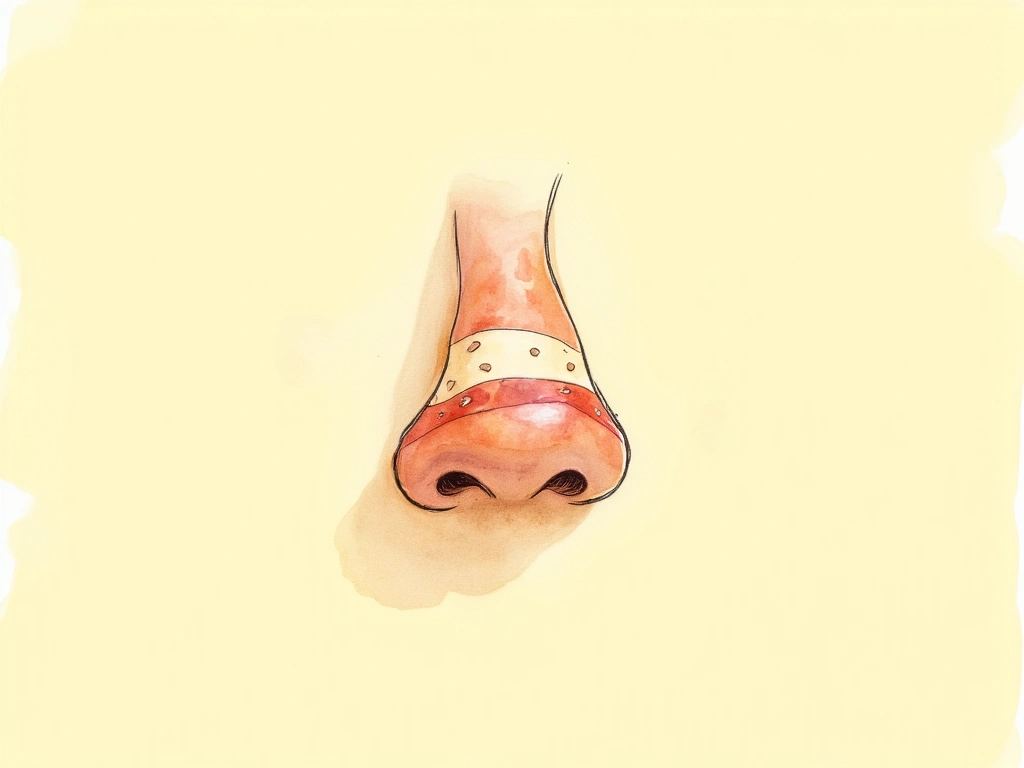
Why the Nose? Understanding Seborrheic Dermatitis and the Nasal Area
The prevailing theory for why seborrheic dermatitis is common on the nose, particularly along the sides, points to increased sebaceous activity. However, a study using thermal imagery suggests a more nuanced explanation.
This study revealed that seborrheic dermatitis tends to affect warmer facial skin areas []. You can see this clearly illustrated in [this photo][1].
Elevated skin temperature may attract bacteria on the skin’s surface, potentially triggering seborrheic dermatitis in these warmer zones as bacteria accumulates.
Before seeing thermal images of the face, the butterfly pattern of my seborrheic dermatitis was puzzling. The thermal images clarified this, showing that nasal folds and the inner eye sockets are among the warmest facial areas (indicated by darker red).
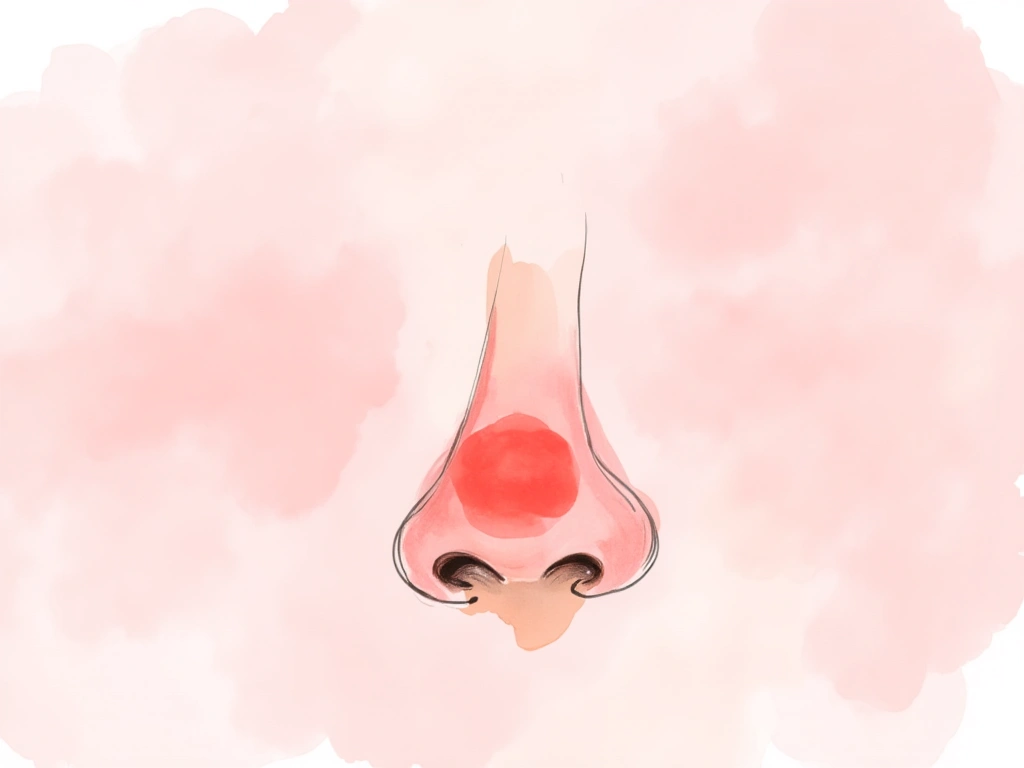
My Personal Experience: Seborrheic Dermatitis Onset on the Nose
My seborrheic dermatitis journey began on my scalp, though I didn’t initially recognize it as such. Then, a noticeable rash appeared on the right side of my nose.
Initially, I ignored it, but the rash persisted and grew more irritated over weeks. Seeking medical advice, a doctor prescribed an antibiotic cream for two weeks. The cream worked initially, clearing the rash, but it returned shortly after, even more pronounced.
This time, the rash seemed to spread. Over the next year, despite trying numerous treatments, seborrheic dermatitis expanded across a significant portion of my face. My detailed experience is documented here.
If your seborrheic dermatitis is confined to your nose, consider yourself fortunate. Learn from my experience and take proactive steps to manage it before it potentially spreads further.

Natural Treatments for Seborrheic Dermatitis on the Nose
Here’s an overview of popular natural treatments for seborrheic dermatitis, ranked by online popularity. My personal approach, which I’ve found highly effective, is included at the end of this section.
Apple Cider Vinegar (ACV)

Apple cider vinegar is a widely favored natural remedy for seborrheic dermatitis on the nose and elsewhere. However, scientific research specifically on ACV for seborrheic dermatitis is limited. Some studies explore white vinegar’s acetic acid content for similar purposes.
For example, [one study][2] focused on dogs, and another provides a [general overview][3] of vinegar’s properties.
ACV is affordable and readily available. Unfiltered, organic apple cider vinegar is often recommended.
A common application method involves diluting ACV with equal parts water and applying it to the affected area for about 15 minutes.
Apple cider vinegar provided some initial relief for me, particularly when the seborrheic dermatitis was primarily around my nose. However, it didn’t fully control the condition or prevent its spread. Despite my experience, many users report great success with ACV.
For more in-depth information, see my dedicated post on apple cider vinegar treatment here, which includes valuable insights from readers in the comments.
Grapefruit Seed Extract (GSE)

Grapefruit seed extract, derived from grapefruit seeds, is marketed as a natural liquid with antimicrobial properties.
However, research, including [this study][2], indicates that the antimicrobial activity in many GSE products is due to synthetic preservatives like benzethonium chloride, commonly found in hand sanitizers. Truly natural extracts without these preservatives showed no antimicrobial effects.
Despite this, I found grapefruit seed extract surprisingly effective for managing seborrheic dermatitis around my nose, especially initially.
For 2-3 months, washing my face with a GSE product (which foamed slightly) seemed to eliminate the seborrheic dermatitis. However, its effectiveness waned over time, and my skin appeared less healthy, becoming paler and slightly discolored.
If considering GSE, research the safety of benzethonium chloride. [This document][4] suggests it’s safe and effective for topical use, even with frequent, long-term application.
Interestingly, [one paper][3] even suggests benzethonium chloride has broad-spectrum anticancer activity. You might consider using a benzethonium chloride-based product directly to ensure precise concentration.
I even experimented with ingesting GSE, based on online information and before realizing benzethonium chloride was the active agent. Knowing this now, I wouldn’t consider ingesting it.
Raw Honey

Raw honey has been one of the more successful natural treatments I’ve used for seborrheic dermatitis on the nose.
I discovered this treatment after my seborrheic dermatitis had already spread beyond my nose. In hindsight, I wish I had known about raw honey sooner.
Raw honey differs from processed honey by retaining natural waxes and impurities, believed to have antibacterial properties, as it isn’t filtered or pasteurized.
A common method, similar to [a 2001 study][4], involves mixing 90% raw honey with 10% warm water, applying it to the skin for 2-3 minutes, and leaving it on for 3 hours before rinsing.
The 3-hour application time can be inconvenient, especially when seborrheic dermatitis affects large areas of the face.
A more detailed guide to using raw honey is available in this post, along with reader insights in the comments.
Dietary Changes

Dietary modifications for seborrheic dermatitis are broad and individualized. What works for one person may not work for another.
The underlying idea is that seborrheic dermatitis might stem from food allergies or nutrient deficiencies.
My research into diet and seborrheic dermatitis has been complex and at times contradictory. Current medical research often points to immune dysregulation as a contributing factor.
I plan to summarize medical research on diet and seborrheic dermatitis in a future post, though conflicting findings have made it challenging. For now, this post outlines common dietary changes that some people find helpful.
However, given how my seborrheic dermatitis spread from my nose, I believe diet alone isn’t the sole factor. It’s likely a combination of immune issues, bacterial involvement, and skin imbalances.
My Breakthrough: BIOM8
After initial success with Restoraderm products, their effectiveness eventually diminished.
Around this time, I was researching for the seborrheic dermatitis eBook for this website (available for free online). This research led me to experiment with various ingredients and create custom formulations.
This experimentation resulted in a formula that cleared my symptoms within days. I was surprised by its effectiveness, but unsure if other factors were at play.
I shared this formula with active community members for testing, and most reported similar positive results, which was remarkable.
Details about this formula and my regimen are available here: My Seborrheic Dermatitis Regimen 2.0.
The comments section of that post and reviews on the BIOM8 website offer additional information and user experiences.
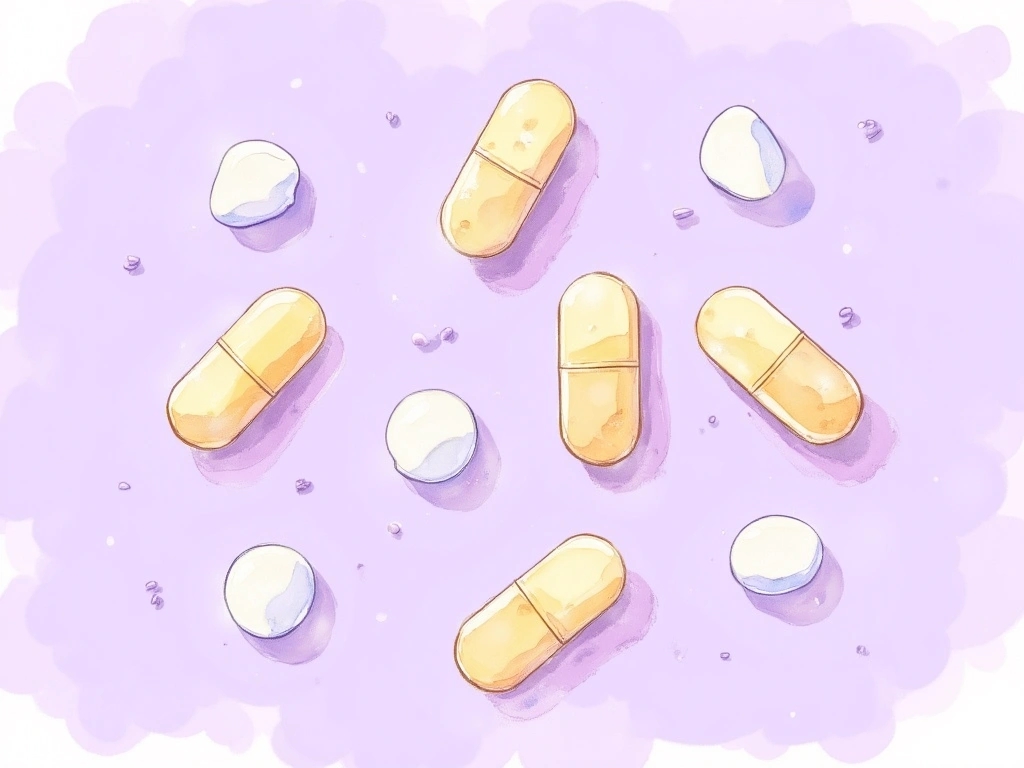
Medical Treatments for Seborrheic Dermatitis on the Nose
Let’s explore common medical treatments for seborrheic dermatitis on the nose. This isn’t ranked in order of effectiveness, but Nystatin, suggested by a reader, is a promising option I haven’t personally tried.
Hydrocortisone Cream
Hydrocortisone cream was my first prescription for seborrheic dermatitis. It provided quick and seemingly excellent results initially. However, symptoms returned rapidly and more aggressively after stopping use.
A major concern with hydrocortisone is potential skin thinning with long-term use [5]. Some research suggests the risks are often overstated [6], but other potential negative effects exist [7].
In my case, seborrheic dermatitis around my nose spread quickly after discontinuing hydrocortisone. Whether coincidental or related, it raised concerns about its long-term suitability for seborrheic dermatitis.
Dermatology literature often favors antifungal treatments over steroid creams for seborrheic dermatitis.
Clotrimazole Cream
Clotrimazole cream, another prescription, is an antifungal from the azole class. Azoles are well-researched and generally considered safe for topical use.
Clotrimazole worked for about a week for me, but its effectiveness waned by the end of the two-week course, and seborrheic dermatitis returned quickly, even during continued use. By this point, the condition had spread beyond my nose.
Further research indicates ketoconazole may be the most effective azole [8]. The study ranked azoles in descending order of effectiveness: ketoconazole, bifonazole, miconazole, clotrimazole, flutrimazole, sertaconazole.
Perhaps clotrimazole wasn’t the optimal choice.
In Canada, these creams require a prescription. However, Nizoral shampoo, containing ketoconazole, is available over-the-counter. Nizoral was too harsh for my facial skin (details here).
Share your experiences with these treatments in the comments.
Zinc Pyrithione Cream
Zinc pyrithione is available in several creams. I used [one from Noble Formula][5], purchased on Amazon. My jar is still mostly full, and Vancouver, BC locals are welcome to have it (along with a soap bar).
Initially, I tried using Head and Shoulders (containing zinc pyrithione) on my face after reading about someone’s success with it. It worked well initially, but Head and Shoulders felt too harsh for facial skin.
This led me to zinc pyrithione creams. Reviews for the Noble Formula cream were positive, and it worked spectacularly for me for weeks, making me think my skin issues were resolved. However, like other treatments, its effectiveness decreased over time.
More frequent applications helped somewhat, but the cream seemed to make my facial skin, especially my nose, very sensitive to the environment, particularly the sun.
Zinc pyrithione wasn’t the right long-term solution for me. I believe in a symbiosis-focused approach for long-term management. However, medical literature supports zinc pyrithione for seborrheic dermatitis, and many online users find it effective.
Nystatin Cream
Nystatin cream was suggested by a website reader, Joakim. I haven’t personally used it and can’t comment on its effectiveness. More information is available on his page here, and other readers have reported potential benefits in the comments.
It’s worth noting that nystatin-resistant strains of Malassezia (the yeast associated with seborrheic dermatitis) exist [9]. This may explain why nystatin is ineffective for some.
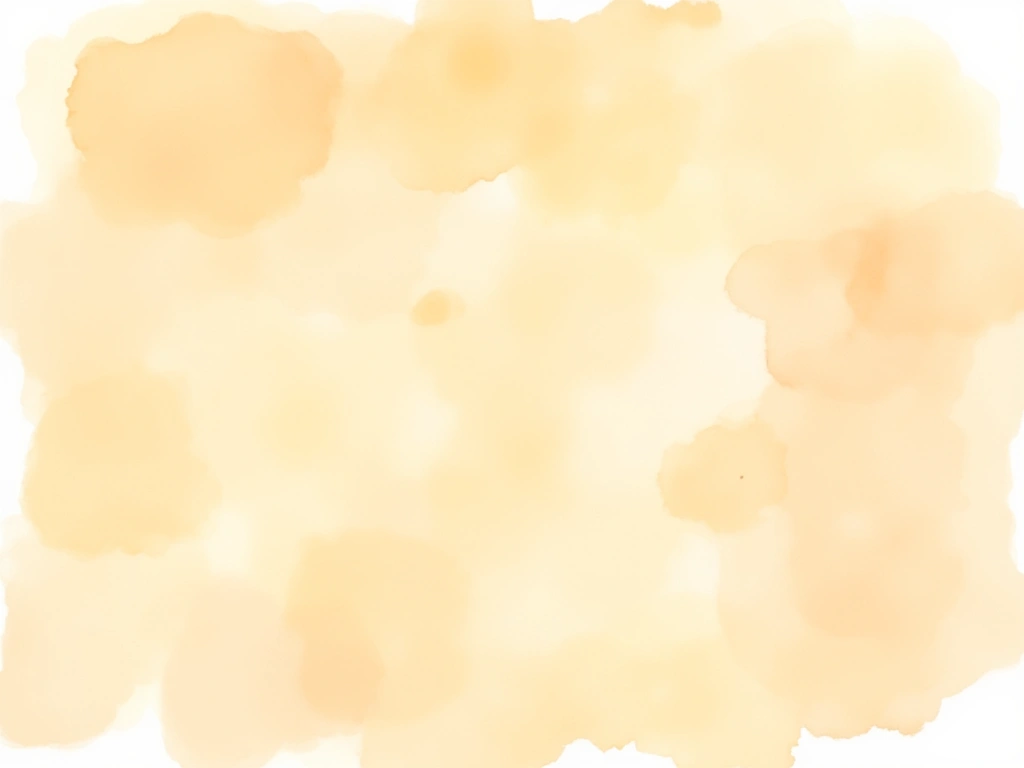
Other Treatment Options
Many other treatments are suggested for seborrheic dermatitis on the nose and body. After trying numerous options (summarized in this extensive post), Sudocrem stood out, especially for nasal folds.
Sudocrem
Sudocrem, a zinc oxide-based diaper rash cream, worked surprisingly well for my seborrheic dermatitis-affected skin.
Using it on large facial areas was challenging due to its water resistance. However, for nasal folds, overnight application was effective, and any residue was easily managed in the morning.
Zinc oxide is considered very safe and has low toxicity even if ingested accidentally ([source][6]).
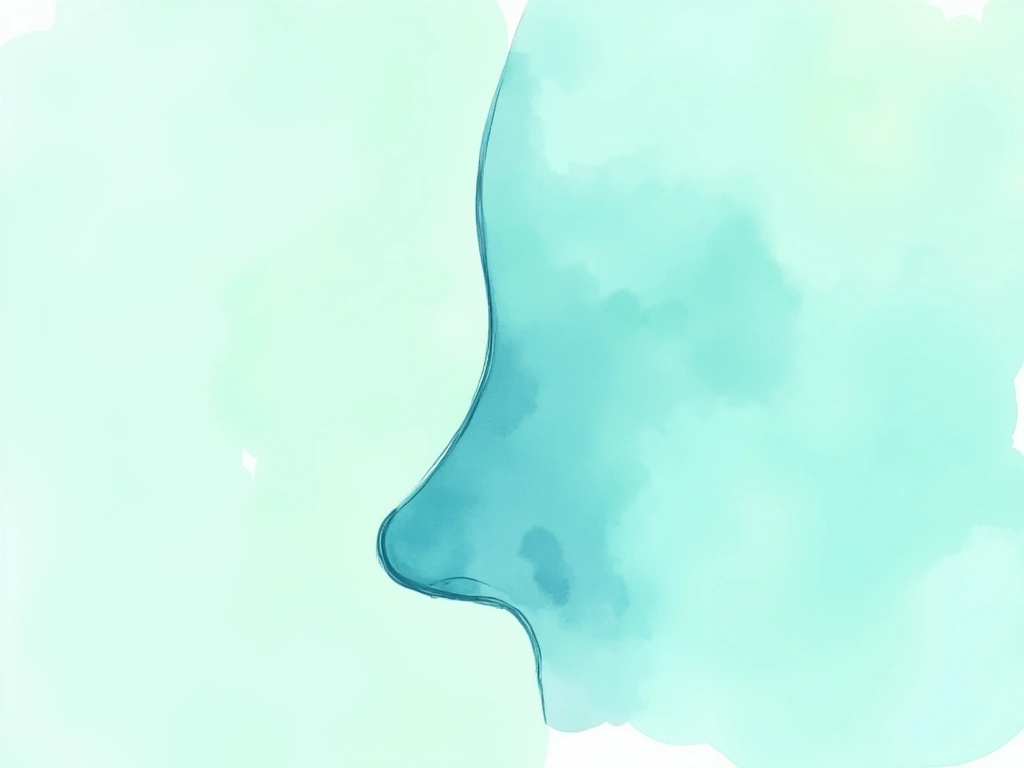
Conclusion
This article has presented various treatment options for seborrheic dermatitis on the nose.
For me, Cetaphil Restoraderm products were most effective. Others find relief with apple cider vinegar and raw honey. The medical community often recommends antifungal products, with Nystatin gaining popularity among this site’s readers.
Share your seborrheic dermatitis nose treatments and questions in the comments below. Your experiences and discussions are welcome!
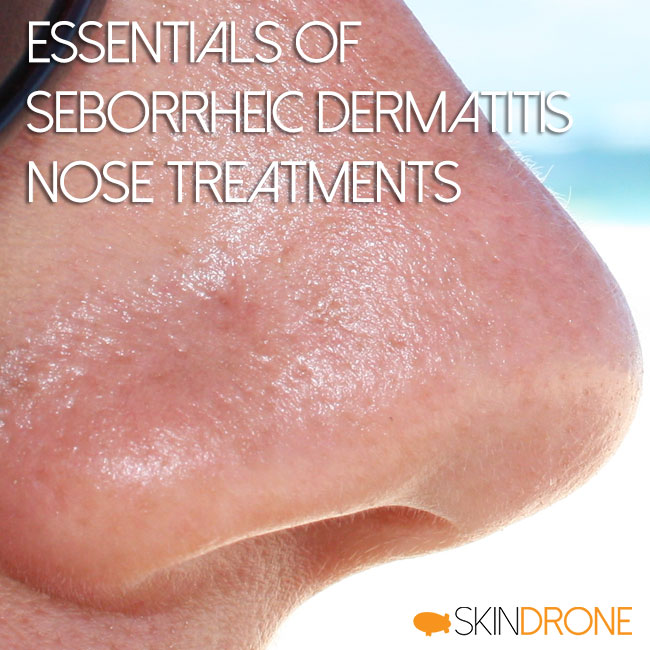
Hi Michael,
After 3 weeks of l-glutamine and both Restoraderm products twice a day, the SD is back and stubborn as ever. Because there is so much conflicting information, it makes the condition all the more frustrating. I was reading the comments on your website the other day and was thinking back to when my SD first started. It too started on my nose and spread from there. My dermatologist insisted it was due to an over abundance of yeast on the skin. That got me thinking the other day that for me, something topical isn’t enough. My body was producing or allowing the yeast to live and multiply. With this thiught, I went to my local drugstore to the feminine aisle. There are many products out there for yeast infections. As I didn’t want anything topical, I opted for a product called Azo Yeast Plus. They are tablets with a probiotic that claim to help with symptoms of yeast infection. As it was over the counter I thought, why not try it? I have been taking 3 tablets a day and am on day 5. After 5 days of aggressive flaking, my SD has “shed” itself. I barely recognized myself in the mirror this morning. I apologize that I haven’t included links to the product, I am travelling and typing this on my phone. If you search Azo yeast plus, you will see its readily available le in many stores. I don’t see any reason why men can’t take this product but I don’t know enough about it to make recommendations. I just want to share what has finally worked for me after 18 months. If you also search azo yeast and dermatitis, I had stumbled on an online forum where one woman also claimed it worked for her but wasn’t sure why. I hope someone finds this information helpful. And lastly Michael, I applaud your dedication to all of us suffering from this. I imagine everyone that comes across your website finds it a true comfort. All the best.
Reply PermalinkHi Sarah,
Thanks for the update.
Sad to hear that the combination didn’t work out for you. However, it’s the perfect example of “everyone is different”.
If you’ve noticed from this post, I’m doing a substantial amount of research on the subject now. Truly hoping to uncover something significant.
However, it’s quite intense going through so much conflicting research in the area. Plus, lots of the papers have a ton of scary SD photos (which can be quite hard to look at, I even try to cover them up as I’m reading the paper).
In terms of the yeast, I definitely thing it’s part of the problem. However, my hypothesis regarding the whole issue is not as clear cut.
As for the Azo. Funny enough, I’ve tried the product. The main overview post failed to mention this. Identical to you, I found it on that forum (it was the only place that it’s results for SD were mentioned). Additionally, there are a few Amazon reviews on the product saying it worked to clear some skin infection for them (don’t believe it was seborrheic dermatitis, but other dermatitis, skin infection, toe nail fungus).
For comparison, here is the one I was using. Unfortunately I don’t have the box anymore and the packets don’t list the ingredients.
My experience with the product was rather short lived. I started taking 3-4 tablets a day and my seborrheic dermatitis improved.
After about a week or so things go really good. So, I bought 2 more packs just so I didn’t run out (I’m in Canada and had to pick it up at a mailbox across the border). A few weeks in the effects started to wear off. To try and combat this I upped the dose to around 5-6 tablets a day. To be honest I don’t quite remember if increasing the dose helped initially, but in the end the SD was back. I kept taking the Azo tablets for a while longer, but they were longer having any effect. In a way I have to apologize for sharing this, as it might cast doubt (and effect results). However, I really hope that they work for you indefinitely.
A few more things regarding the Azo. I’m not sure if the one I was taking was the plus version. Perhaps, I could dig up my old Amazon reciept and find out. The packaging looks the same except without the “New Formula” part. Looking at the ingredients list, their new formula doesn’t seem to contain bacillus coagulans, which I remember 100% mine did. Back when it was working, I hypothesized that it was the bacillus coagulans combined with the fractioned coconut oil which made it effective (both have been shown to be good at controlling yeast). Personally, I’m a skeptic to homeopathic stuff, so I didn’t take the active ingredients listed as active into account (The dilution of homeopathic medicine just doesn’t make sense to me). Prior to Azo, I’ve actually tried bacillus coagulans on it’s own from Thorne Research. Strangely enough, it didn’t do anything for the SD on it’s own. It did improve my general sense of well being though (particularly energy levels).
Didn’t expect to write such a huge reply :). Hope it helps. All the best and stay in touch. Look forward to hearing about any progress you make.
Reply PermalinkHi Michael,
Thank you for your response. Another frustrating aspect of SD, at least for me are the number of things that seem to work, at least at first. I am thankful that you shared your experience with Azo because it’s a lesson to me to try something for an extended period of time before reporting it’s success. So in a way, I am to apologize for posting my experience so quickly. I will keep going with my existing regimen and report back. Any suggestions/recommendations from you or others how long you use something before deeming it effective or ineffective? Obviously if the SD subsides and then returns, I would consider it an ineffective product but since you have been SD free for quite some time, I would appreciate to hear your thoughts. Many thanks.
Reply PermalinkHi Sarah,
Yeah, it’s probably the single most frustrating components of SD. Also likely why there is so many of these different treatments sprinkled around the internet (with very little follow up information).
Really hard to say, but overall it feels like anything past 3 weeks is good.
Look forward to any updates.
Reply PermalinkHi Michael. Thanks for all your work on this topic. I’ve had SD for about 15 years now but not too bad compared with many people here. Just the butterfly effect around the nose. My beard covers up the rest. I’ve tried a bunch of things (anti fungal creams, steroid creams, sea salt, ACV, tea tree oil, etc) but mostly focused on avoiding foods that make it worse. Fermented and spicy foods are the worst for me. Emotions and stress really are a huge trigger also. Which makes me wonder about people here who talk about how something was working for a few weeks or months but then suddenly stopped working. I wonder what was going on in their lives – if stress increased, then that might have overwhelmed their skin even if the regiment they were following was good for them. With so many variables in play, it is hard to pin down the effects of each one through personal anecdotes. Well, that’s what science is for, isn’t it? Haha.
Currently, I only use J&J baby soap to wash my face a couple times a day. It seems to help and has a calming effect on any food-related butterfly breakouts.
I may try ACV again but at a lower concentration. I think I used 1:1 before but it irritated it. Some sites talk about starting at 1:10 which is much weaker.
Sea salt did seem so promising. I know my face has improved whenever I have been swimming a lot, especially in the ocean or a salt water pool. But when I attempted some of the face washes, it didn’t help much and usually made it worse. But that may be a question of finding the right salt concentration for me.
I hadn’t heard about the Restoraderm so I will put that on my “to do” list. Although its encouraging that some people like you have benefited from it, it’s also maddening that many people don’t have results with it. I wonder if it can actually be put into that category along with ACV or coconut oil.
Have you tried any of the Vitamin C-based facial serums? Vitamin C is very good for the skin it seems as people rave about its ability to rejuvenate. That is also on my to-do list. But it’s even more expensive that Restoraderm.
Anyway, thanks for the blog and sharing your spirit of inquiry.
Reply PermalinkHi Chris, Thanks for checking in. Same as you mine was limited to the butterfly and not too much else (also ears and scalp).
With foods I found a strategy that kind of worked better than avoiding. At-least I think it did. Basically instead of avoiding I just started to focus on what I should be eating, instead. The simple change from what to avoid, to what to eat was quite helpful in reducing and associated stress from food limitations.
The emotions and stress aspect seem to play into the hormonal aspect of seborrheic dermatitis. And yeah it definitely get's difficult to pin anything down with so many variables at play.
After learing a bit about skin cell microbiology I think a piece of this, which is not often mentioned, is how some of these cells and bacteria work. About 90% of the individual microbial cells found on the skin are actually dormant (metabolically inactive). So some of these treatments that target the reproduction mechanism of the bacteria are really only effective on the active ~10%. Now how much of these 10% might be bad and how much are the good ones that are protecting our skin? So perhaps some of these treatment approaches can seem effective as that 10% is killed off, but what happens? As the inactive cells activate perhaps the ratio of good to bad cells becomes disrupted even further and the SD actually progresses.. This avenue of research is quite interesting and has only been gaining momentum in recent years (due to technological advances).
Yeah, for the ACV and the sea salt I think pin pointing the exact concentration can be of benefit. For the sea salt I would image trying to mimic natural salt water salinity would be the best. In a majority of medical studies a concentration of 5% is used (source). As for ACV, it's hard to imagine what the perfect ratio would be and I wish more research was done in this area.
As for the Restoraderm, I contacted them earlier this week about samples. They said I should tell Canadian readers to contact them at questions@cetaphil.ca and they can send out samples. Hopefully, your in Canada and can benefit from this.
Yeah, I attempted making my own vitamin c serum on a few occasions as I read that it's better made fresh. It didn't really do much for me, except sting the affected areas. Vitamin C seems quite good internally though and I noticed it had an effect of reducing the heat sensation. If I was to go down this route again, I would probably try something like this or this. I've got a gut feeling that arginine has a large role in the effectiveness of the Restoraderm. However, I haven't tried these products myself.
Hope that covers all your questions. Perhaps join the community to discuss things further. Best of luck.
Reply PermalinkThanks for your reply. I will check out the forum for sure. I’m in Toronto, so I will contact Cetaphil and try to hit them up for samples. Thanks for the tip!
The sea salt thing was frustrating because I tried several different concentrations. I did mix it to 3.5% salinity which is standard for most oceans but it didn’t do anything. Sometimes it made it worse. Odd because I know swimming is beneficial. But I wonder if I just liked swimming and that reduced my stress and THAT was the reason my skin cleared up. What a puzzle. But the literature seems fairly decisive that mineral salts are good for the skin. Whether they are good for facial skin could be a trickier question.
Bummer about the Vit C. I would definitely consider the commercial cosmetic preparations because dismissing the whole concept. The Watts stuff is cheaper but it doesn’t specify it is 20% Vit C which is sort of the industry standard (e.g. Oz Naturals). But the reviews are positive so that’s something.
The food thing has to work for you. Whatever works – that’s good. I’ve learned that no matter how many healthy and good things I eat, it all counts for nothing if I’m eating salads with a lot of vinegar or sushi with soy sauce or kimchi. Those fermented things get me every time! I can cheat a little now and then and I’m none the worse for wear.
Reply Permalinkp.s. Swimming in a chlorine pool could be good because the chlorine kills bacteria on the face. Salt does it too it seems.
http://circleofseven.net/top-five-benefits-swimming-has-on-your-skin/
Reply PermalinkYeah, let me know how the samples go. It would be interesting to hear if they actually mail them to you.
As for the salt, perhaps it’s the iodine content as well. Or maybe it’s just the complex natural composition of sea water (full with it’s own diverse range of microbes). It’s all just guessing though.
The only reason I found the watts stuff is because I was doing some research on topical arginine. It’s supposed to be good at improving circulation and nutrient delivery to the top layer of the skin.
Plus the hyaluronic acid has lots of good stuff written about it. Check out the clinical significance section on wikipedia.
Let me know what you end up getting and look forward to any updates.
Reply PermalinkHey Chris,
One thing just came to mind a while back, but I haven’t mentioned it on the site yet.
A bit ago I had some nasal congestion and bought some saline nasal spray (0.9%). It seems like it would be perfect as a facial spray instead.
It’s a really fine mist, so spraying this onto the face seems like an appealing method of salt water treatment.
The one I bought was a little more expensive, but it’s actual sea water that has been sterilized and they claim on the package it contains all the other trace minerals.
Here is the exact one: http://amzn.to/1K1WKNz. It’s way too expensive on Amazon though.
Mine was around $10 CAD at a local store.
Haven’t tried it on my face though (if it ain’t broke don’t fix it).
Reply PermalinkJust thought I should share.
Cool idea about the sea salt nasal mist. I will keep it in mind.
Just to you know, I contacted Cetaphil and they got back to me in a couple of days. So they are sending me the samples. Woo-hoo!
Also, I did try to sign up for the forum but never received the confirmatory email. Not sure what happened there.
Reply PermalinkI figured out the forum problem. Just a typo with my email address.
Reply PermalinkGreat to hear. Will include that information on the site somewhere.
Reply PermalinkThanks for confirming and glad to see you on the community
Hi again Michael.
I thought I would let you know how the Restoraderm was going. I got the free samples in the mail as you suggested. Great tip!
I ate some known “bad” foods for me in order to put the Restoraderm to the test. (Soy sauce and kimchi.)
I tried the cleanser and moisturizer for a few days according to your protocol. Unfortunately, I didn’t see any obvious change in my skin. The redness and scaliness were basically unchanged.
I think the Restoraderm could still be useful on a long term basis but it did not have an obvious suppressing effect on any breakouts. I know that if I stay away from the bad foods, I can keep mine under mostly control.
Thanks for the suggestion anyway.
Reply PermalinkHi Chris,
Thanks for the update. Sorry to hear that it didn’t work out.
When I started using it initially, I was on a super clean diet so maybe this might have played a role. An perhaps the Restoraderm was useful in locking in any progress.
I’ve been studying their formulation and the patent behind it (https://www.google.com/patents/US20100324111), but basically it’s meant to restore the acid mantel and supplement some missing components of atopic skin (that Watts one has some of these components).
Here’s a paper comparing different ingredients in most popular moisturisers:
Overall though everything I’ve researched so far has been hinting towards immune system issues. In one study (I can’t find at the moment) they mentioned that once we hit +70 years of age, atopic conditions like SD seem to go away from natural immune system down-regulation and something happening to our t-cells.
This is such a complex subject though and super frustrating to try to understand.
I’ll try to add an area on the site where people can submit their trigger foods. Maybe statistics can uncover some similarities.
Also, here is the digestion chapter outline of the book I’m working on: https://workflowy.com/s/bw29onN3EV
Let me know what you think (if you end up looking through it).
All the best and hope you find something that works.
Reply PermalinkSir for the first time in my life I ve been diagnosed to have seborrheic dermatitis present around nasolabial fold, it’s been 7days I got it n m on topical corticosteroids… So this disease won’t go n ve to live with it right??
I don’t know what made it come
Reply PermalinkPrevious to it I was on oral steroids for 10days, had acne all over my back n chest n shoulder n I stopped steroid which was prescribed for my disc disease… Then this started
Please guide me what do I do from now only
Hi Kanishka,
I’m sorry to hear that. Hard to say if it ever goes away or not.
For me it has been gone for about a year. Last week I actually forcefully made it come back by testing out a certain dietary approach I’ve been working on for this site. However, the dietary thing still needs further testing from the community.
For now perhaps you may find some useful information in the “Overview of Seborrheic Dermatitis Face Treatments” post. The last few sections cover what worked for me and the Restoraderm products seemed to be fairly effective for many others as well (you can find feedback in the comments).
Additionally, for the dietary approach you can find a link and password to access it in this comment. But, this approach still needs testing by others in order to determine it’s overall effectiveness.
Hope that helps and best of luck!
Reply PermalinkPS. I’m sure you will be able to get things under control.
I just wanted to say that I get SD around my nasal folds every summer. Usually I just put up with it and it goes away within 2 months of vigilant washing and not wearing makeup. This year it was bad, and spreading fast so I decided to try something new, I found Nizoral shampoo, the active ingredient is an antifungal, ketoconazole, last week and the first use the redness was greatly diminished and itching was gone. I’m now on day 5 of using it and I have a 90% improvement. I don’t know if it will last or work for everyone but it’s helped me at least not be embarrassed to be seen in public the last week. Like I said, my SD is not chronic so it may be different for people who suffer year round. Mine actually clears when fall hits and the heat and humidity go away. I wash my face twice a day with it but I think tomorrow I will cut down to once as it dries the skin quite a bit. Hopefully if you try this it will work for you.
Reply PermalinkHi Myrna,
Thanks for checking in and describing your experience. Glad to hear the Nizoral worked so well for you. For me it totally controlled the SD, but the skin was left looking a little unhealthy, bare and dried out. That was the main reason I kept searching. Kind of wanted to find the least invasive approach to control things.
I’ve been currently getting a much better understand of SD. Hoping to put this down in writing soon. Basically though, what I currently understand is that our skin (people that suffer from SD) is missing vital anti-microbial fatty acids or peptides. Without these it becomes much more prone to colonization by foreign invaders. Nizoral works by wiping out the foreign invaders, but I think the most effective long-term approach is correcting the faulty skin barrier.
Thanks again for leaving details on your experience. All the best!
Reply PermalinkHi Michael,
Just thought I would update as it’s been over 2 weeks since starting Nizoral. I continued using it twice a day and my skin seemed to get worse, but it in a different way. It was red and dry and very sensitive. I figured it was because the Nizoral was giving me a slight chemical burn ( I was leaving it on for 5 minutes and really scrubbing it into my skin) I cut down to once a day and not leaving it on for a few minutes Liked I had been and my skin is back to improving. Flakes and itching are gone and all that remains is a slight pink around my nose. I do think Nizoral is helpful if used in moderation. I feel like it tamed the majority of the beast and made it just manageable enough so I wasn’t stressing about it all the time. Hopefully it continues to improve! I use cetephil as a daily wash btw and try not to put any lotion on.
Reply PermalinkHi Myrna,
Thanks for the update. Yeah, Nizoral is some pretty strong stuff. Perhaps a prescription product containing ketoconazole (specifically designed for the face) could be better, however I have not tried any. Also, it’s been my experience that the less forceful I am when applying anything the better the results.
I’ve been doing a ton of research in the past month or so and I think there may be a better approach to SD than anti-fungal treatments. Will send an update as soon as I have everything down on paper.
Hope things keep improving and thanks for the update. All the best.
Reply PermalinkI m from india and i suffer from seborrhice dermatitise within 4 years
Reply PermalinkHi Manish,
That is unfortunate to hear. Another individual from India had good results with the apple cider vinegar treatment. Additionally, my own experience is best documented in this overview of seborrheic dermatitis face treatments article.
Hope that helps. Ps. Let me know if you plan on trying the Apple Cider Vinegar approach as the previous person sent me details on where she was able to purchase it in India.
Reply PermalinkI just wanted to thank you for making this site. I have suffered from Seborrheic Dermatitis since 10th grade, and while I was able to keep it controlled in high school it eventually got out of hand. Covering my entire forehead, moving from my nose onto my cheeks, and starting around my mouth. None of my previous treatments had been working. I had given up on finding a treatment and thought I was just going to have to live the rest of my life with my face covered in scale. I went years rarely treating it because everything I had tried failed. I came across your site one day and it inspired me to try some of the treatments listed here. After using ACV to remove the scale and then using restoraderm lotion (a product I had seen but never thought to try) my Seborrheic Dermatitis drastically improved in a few days. Now a bad day is some minor pink that usually goes unnoticed, rather than having to hear comments about how I need to apply sunblock to my face better. Thanks!
Reply PermalinkHi Patrick,
Thanks for checking and sharing your story. Hope it keeps improving.
Hope it keeps improving.
Happy to hear about the success
The Restoraderm worked really well for about a year for me. However, results started to get a little shaky this summer.
For the past 1.5 months I’ve drastically changed my approach and only use water and product I’ve made myself.
You can read details here:
My Seborrheic Dermatitis Skin Regimen
Also, if it’s of interest to you. You can find a draft copy of the SD chapter of a book I’ve been working on here:
All About Seborrheic Dermatitis<
It goes into detail on what seborrheic dermatitis is.
Hope that helps and all the best!
Reply PermalinkHi where can I buy the Restoraderm Wash and Moisturiser for the Nose and Face. I have looked on the cetaphil website and it just shows a body wash. I look forward to hearing from you
Reply PermalinkHi Suzanne,
Sorry for the confusion, the ones that I used are actually usually labeled as Body.
However, I exclusive used them for my facial area. Additional information can be found in a previous comment: Response to Martin regarding Cetaphil Products.
Hope that helps.
Reply PermalinkBest of luck.
I’m so tired of all the dead skin on my face Ears,nose,moustache , and of course my hair&side burns.I look forward to learning more from you about this Issue,sincerely.Larry U.S.M.C retired
Reply PermalinkCurrently on ketoconazole 2% cream. Looking for alternatives.
Reply PermalinkWonderful articles. Thank you. My problem started after I went away to college, 52 years ago! I never had any problems in my own, home area, with scalp or face, nor did I ever have acne or even a pimple. Shortly after starting school in Buffalo, I started to get scales on the sides of my nose, right greater than left. At first I could scrub them off with a wash cloth. All this time, my scalp remained clear. I was using Breck shampoo at the time which had coconut oil. Breck is out of business, I believe. By the 80s, problems had started on my scalp and the sides of my nose looked like alligator skin. I tried everything available at the time - Sea Breeze Sensitive Skin, straight rubbing alcohol, Neutrogena liquid soap (worked the best at that time). Nothing helped either permanently. A dermatologist put me on Accutane for a while which did seem to help but only for a while. Were I not done having my family, I never would have used it. Fast forward to late 90s when a dermatologist ordered Nizoral prescription shampoo (not the OTC one) plus something called FS shampoo. I was to use both on face and scalp. They worked beautifully, for a while. Eventually the FS Shampoo formulation changed (and worked less well) and then was discontinued. Recently I tried the new Head & Shoulders in the dark blue bottle (with selenium sulfide) and it worked better than anything ever before, on my scalp - BUT I noted my hair getting thinner. I could actually see pieces of it here and there so stopped using it. I went back to Nizoral prescription shampoo but it does not seem to work as well as it once did, sadly, and it seems to make the back of my head smell awful (cannot figure out why). Because of it, I have taken to putting alcohol on the back of my head. As far as the plaques on my nose are concerned, I started using Murad’s Resurgence line. The cleanser has papaya and that keeps the plaques off my nose, thank Heavens, and my skin looks better than it has in a long time. My scalp is another story and is driving me crazy, with some itching bumps coming down onto my forehead. I do note an increase in problems if I consume too many sugary goodies. An article I read recently on the scalp flaking says to use the different types of dandruff shampoos but use a different type (ingredient-wise) every single time you wash your hair, so the fungi do no beckme resistant to the medication within. I bought some coconut oil so will give that a try tonight to see what happens, but I have also made an appt with my dermatologist. Oh there is also a scalp product called fluocinolone acetonide 0.01% topical oil. It is by prescription here in the US and I believe it is a cortisone-type product. You apply all over scalp for 4 hours, cover with shower cap and then wash out with regular shampoo. I will give it a try to see if it calms the itching. The dermatologist told me I have “typical Irish ancestry skin” - too sensitive and with too rapid cell overturn, leading to the plaques on my nose and scalp. If there are any updates after I see her, I will post again. Thanks for all your research.
Reply PermalinkNice and very helpful article and nowadays I am using manuka honey & mafura oil for my hair Because this vitamin rich hand cream deeply moisturizes, providing immediate relief to dry, rough skin.
Reply PermalinkHello i have been suffering for almost 2 years, my allergist says this is due to our 2 dogs which we have had for four years he says the sensitivity was delayed and took about 2 years for this to come out. Also I have severe inflamation around a good part of my body is this common with SD and also my discharge from my head has a foul smell is this also common
Reply PermalinkThank you for any info
Hello i have been suffering for almost two years, my allergist says this is due to our two dogs which we have had for four years he says the sensitivity was delayed and took about two years for this to come out. Also I have severe inflamation around a good part of my body is this common with SD and also my discharge from my head has a foul smell is this also common
Reply PermalinkThank you for any info
Hello i have been suffering from SD for two years, I have severe inflamation around a good part of my body is this common with SD and also my discharge from my head has a foul smell is this also common
Reply PermalinkThank you for any info
I only learned about BIOM8 this last week. I sure hope this works. I have been to ER TWICE. I will be so happy to get off of prednisone. I worry about my bones. I will be purchasing from your site. THANK YOU. JOHN GRIFFIN
Reply PermalinkSuffering so badly around my nose not just with flaking skin but also large sore lumps
Reply PermalinkMy skin is always red and inflamed
The day the doctor prescribed me with betacap scalp application my life changed! Iv been using it for 7 years now and every time it flares up I re apply the product. I even use it in my ears and on the corners of my nose ( which does sting a bit ) when I met my now fiancé 5 years ago he had SD and had suffered for years, he now applies betacap once a month for 2/3 days and that controls it for him. I have SD on my nose and I apply it for around 3/4 days every 3 weeks or so to maintain it, my issue is I wear makeup which makes it flare up - I also die my hair which makes my SD on my scalp go crazy. Try BETACAP let me know how you get on, it changed my life. ( I think you can buy it online ) I have a rolling perscription from the NHS.
Reply PermalinkHave you tried the zinc pyrithione bar soaps for the face. They are 2% strength since like scalp shampoos they designed to be rinsed off after 20 or 30 seconds. Some have only 4 or 5 ingredients, shea butter, olive oil etc (as opposed to the harsher shampoos).
Reply PermalinkMichael,

Reply PermalinkIn the Other Options section, you wrote, “the two below stood out the most” and then you only described one thing, the Sudocream.
Also, you mentioned Restoraderm in the summary as being the best treatment, but you actually didn’t describe it in the main body of your article (as far as I could see), so it was a bit of a surprise at the end to see that it was rated the best treatment for seb derm near the nose!
And, Biom8 is only mentioned in the middle of the article and not in the summary, but am I correct in assuming that it ended up being the treatment that worked the best for you?
It looks like you had written this article a while ago, then as your personal treatments/solutions changed, you came back and edited it a little bit, but only in parts, and not as a whole, so there are some loose ends now.
I am not criticizing - this article still has a lot of great information!
I am a new visitor and I have clicked around a bit, but this is the first article I’ve carefully read on your site, so maybe that’s part of my confusion. (I can see that it’s probably a supplementary article and not one of the main ones where you really detail what you tried and what you have learned overall.)
I will continue to click around and read more about your information and experiences. Thank you for sharing them for the benefit of others.
Hi …again! I forgot to add that Demodex skin mites can be added to the mix of my challenges. Dermatologist hate to talk about this because it is a naturally occurring thing we all have. Of course when you get break outs and skin breakdowns it becomes out of control. Who knows which comes first the chicken or the egg but I am sure mine is a huge component of my problems. I have autoimmune disease and cutaneous Lupus but until the last 2 years have never had any skin problems! I was only given the DX of Lupus because I tested positive for it during a Sarocidosis biopsy …UGH! Thus, I have both and now with SD and P.A. (psoriatic arthritis). Lee
Reply PermalinkHi Myrna
I have been reading your post on seborrhiec dermatitis. I have the flakiness mostly between my eyebrows and sides of my nose. I have tried everything but nothing has worked long term. My dermatologist told me to was my face with Nizoral shampoo. I did this but found it very drying and unbearable but I am keen to hear how you are doing. Are you still washing your face once a day with the Nizoral shampoo? Hope you don’t mind me sending you this message. Thank you
Reply PermalinkI have had moderate to severe SD all of adult life and have tried everything. I found this website a couple years ago and I must say I’m very happy with what everyone’s doing. My experience with SD is a long one and I agree with most of the stuff on this website but more recently I’ve tried rubbing Sulphur soap around my nose and cheeks in the shower and it’s worked really well! However like all the other treatments I fear there will the SD will become resistant to it eventually. I still use biom8 every now and then but I’m carefull not to use it too much as the SD’s resilience keeps on growing. I ordered the sulphur soap online from China and it was vary cheap. I just thought I’d share this information on this website to reciprocate all the goodness I have got from it. Gd luck to all
Reply PermalinkHello i have been suffering from SD for two years, I have severe inflamation around a good part of my body is this common with SD and also my discharge from my head has a foul smell is this also common
Reply PermalinkThank you for any info
Hello i have been suffering for almost 2 years, my allergist says this is due to our 2 dogs which we have had for four years he says the sensitivity was delayed and took about 2 years for this to come out. Also I have severe inflamation around a good part of my body is this common with SD and also my discharge from my head has a foul smell is this also common
Reply PermalinkThank you for any info